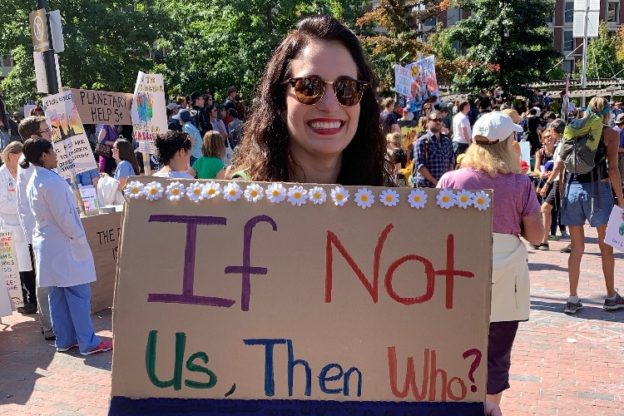Last week, Mass Audubon’s Climate Change Program Director, Alexandra Vecchio, took over our Instagram story to answer your questions about climate change and cities for our First Friday Climate Action Ask Me Anything (AMA).
Here Were the Top Three Most Asked Questions:

Q: Does climate change affect cities differently?
A: Yes, because of what lies inside cities. Cities contain a large number of impervious surfaces, which don’t absorb water. These surfaces increase runoff and flooding during storm events.
Cities also experience much warmer temperatures compared to surrounding rural or suburban areas due to increased absorption and retention of heat. Our urban centers house less flora than their suburban and rural counterparts, which turn heat into moisture to “sweat” and keep their environment cool. Paired with dark asphalt, buildings, and other typical urban features, our cities are retaining and creating heat at a higher rate.
Q: How can we use nature in our cities to fight climate change?
A: In my city, Somerville, I love to see street trees, which provide habitat for local wildlife, shade for our communities, and natural climate mitigation. Trees mitigate climate change by soaking up the most common greenhouse gas, carbon dioxide, like a sponge.
As we see increased temperatures in Massachusetts due to climate change, trees are particularly important to shade our homes and reduce the amount of energy we use to keep cool. Trees also help alleviate the urban heat island effect: when parts of our cities are significantly hotter than neighboring suburbs.
Q: I’ve seen a lot of rain gardens around Boston. Can you tell me about the impact they have?
A: Rain gardens, or bioswales, use vegetation to help absorb storm water during heavy rain events, filter out pollutants, and then allow the water to slowly sink back into the soil. They can also provide habitats for local pollinators and wildlife.
This nature-based climate solution improves water quality and reduces flood risks – protecting our homes and businesses. Green infrastructure like this can be found all throughout Massachusetts.
We Can Help
It’s easy to focus on the risk climate change poses to our urban centers, but we encourage you to look around your own city for the many climate solutions in action. You can get involved in a street tree planting initiative like the City of Boston’s program, help care for a nearby community garden, or serve on a local board to advocate for the increased use of nature-based solutions or green infrastructure in your own neighborhood.
You can also visit one of our urban wildlife sanctuaries to see natural, urban climate solutions in action: Boston Nature Center in Mattapan, Broad Meadow Brook in Worcester, and Oak Knoll in Attleboro.
Tune in Next Time
If you didn’t have time to submit your questions, ask them in the comments below or email us at [email protected]. If you’re looking for another space to ask questions and have judgement-free conversations about climate change until our next AMA, register for our virtual Climate Café on July 16.
Make sure to follow us on Instagram, @MassAudubon, and visit our Story next month on August 3 to ask your questions for our First Friday Climate Action AMA. We’ll see you then!


